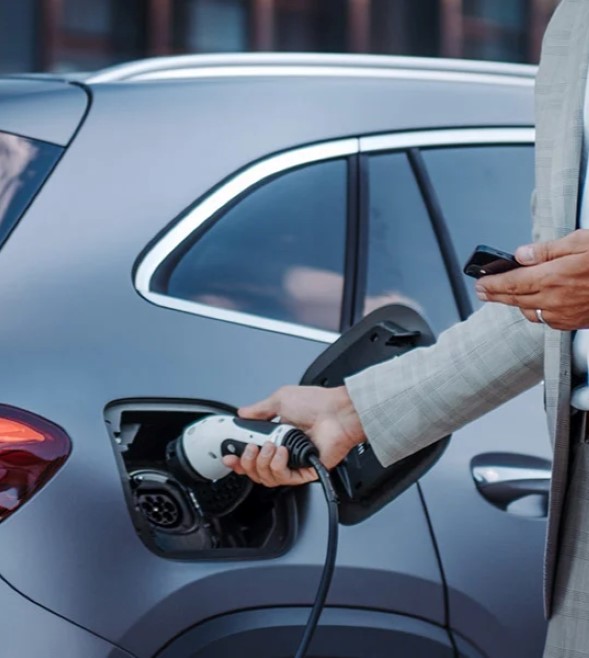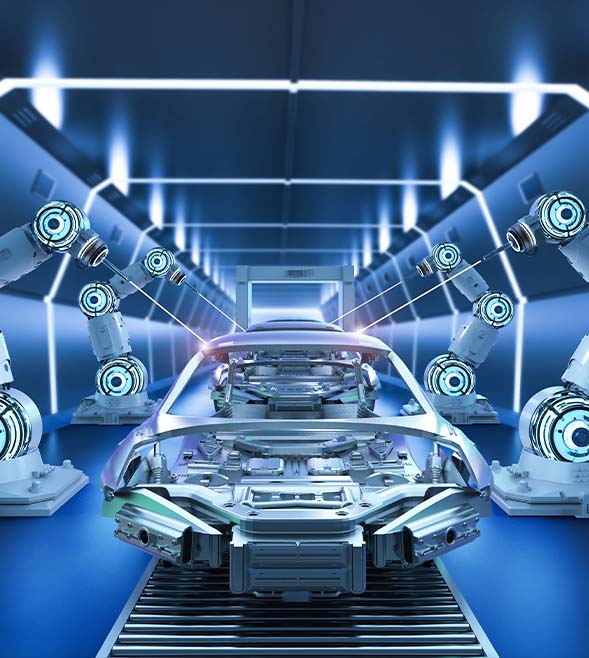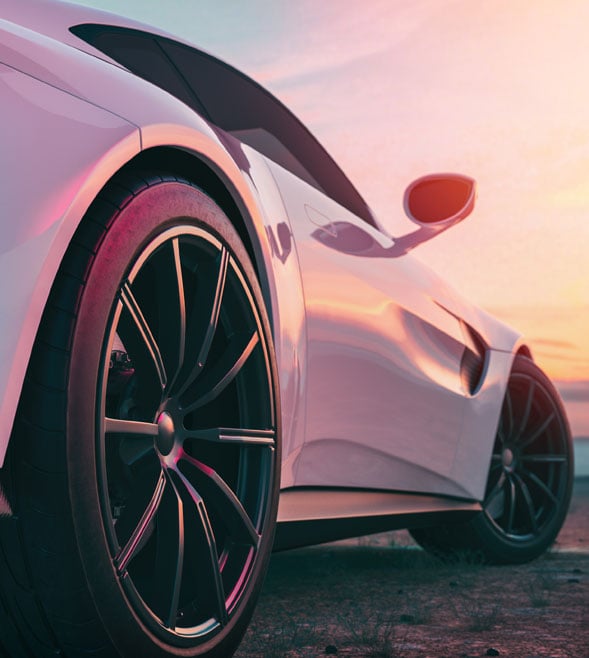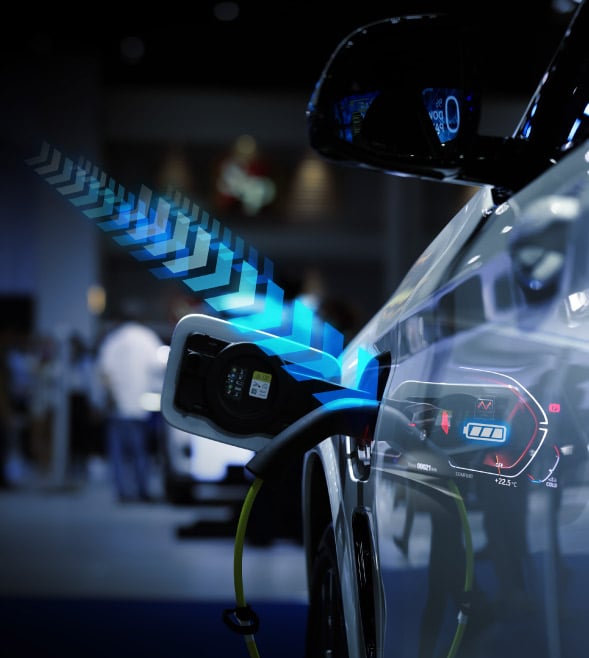-
Business Consulting
Our business consulting specialists offer a comprehensive blend of strategic advisory services. We assess the business, industry, operating model, synergy, skill sets and vision of the organisation and recommend the way forward
-
Digital Natives
Unlock growth with Grant Thornton Bharat's Digital Natives solutions. Customised support for tech-driven companies in healthcare, gaming, and more.
-
New and Emerging Tech
In a world where change is constant, staying ahead means staying adaptable. At Grant Thornton Bharat, we believe the future belongs to those who can evolve quickly, leveraging new and emerging technologies not just as trends, but as strategic levers for transformation.
-
Finance Transformation
Using a holistic approach, integrating digitalisation and digital transformation we help clients achieve transparency, control, governance, and faster decision making through real-time data within the business.
-
Human Capital Consulting
Our Human Capital Consulting team harnesses technology and industry expertise to assist in constructing adaptable organisations with transparency, fostering productive and value-driven workforces, and inspiring employees to engage meaningfully in their tasks.
-
Production Linked Incentive Scheme
Production-linked Incentive Scheme by the Indian government is aimed at boosting manufacturing. Grant Thornton Bharat offers varied services across sectors to help businesses avail of this scheme.
-
Public Sector Advisory
Our Public Sector Advisory team has focused streams, aligned with the core priorities of the Government of India. We are responsible for providing innovative and customized technical and managerial solutions.
-
Tech Advisory
We have amalgamated Digital Transformation, IT Advisory & Information Management and Analytics into a new offering, DigiTech.

-
Direct Tax services
Our tax specialists offer a comprehensive blend of tax services, tax litigation, regulatory and compliance services, helping you navigate through complex business matters.
-
Indirect Tax Services
Get tax services by leading tax firm Grant Thornton India. Our indirect tax services include consulting, compliance and litigation services for corporate, international and transaction tax
-
Transfer Pricing
Our transfer pricing services experts provide a range of services from provision of APA services to handling large global assignments including Country by Country reporting.
-
US Tax
At Grant Thornton, we help individuals and dynamic companies deal with US tax laws, which are one of the most complicated tax legislations across the world.
-
Financial Services - Tax
Best financial consulting services, tailored for small and large businesses by the experts having comprehensive knowledge of domestic laws and access to multifaceted tools to provide a valuable results.
-
Financial Reporting Advisory Services
Our experts have significant hands-on experience in providing IFRS/US GAAP services, end-to-end solutions and support services to fulfil financial reporting requirements.
-
Fund accounting and financial reporting
International operations often lack standardisation and have varied local reporting formats and requirements. Our experts can offer proactive insights, practical guidance, and positive progress and help meet regulatory timeframes.
-
Compliance and Secretarial Services
Our experts can assist in overhauling the entire compliance machinery of the organisation through evaluation of the applicable statutory obligations, monitoring of adequate governance controls, reporting and providing ongoing support.
-
Global People Solutions
As businesses transcend borders, both domestic and global considerations need equal attention. Our interim CFO and financial controller support services help organisations meet the business vision.
-
Finance and accounting outsourcing
Our accounting experts assist organisations in managing their accounting and reporting. Our dedicated Integrated Knowledge and Capability Centre (IKCC), allows us to service both the domestic and global markets efficiently and cost-effectively
-
Compliance Management System
We have automation solutions for you that will allow meeting government requirements and remain diligent, which when failed, can lead to penalties and loss in revenue.
-
Centres of Excellence
Strategic business hubs for global delivery
-
Global compliance and reporting solutions
At Grant Thornton Bharat, we meet the challenges of our clients and help them unlock their potential for growth. Our professionals offer solutions tailored to meet our clients’ global accounting and statutory reporting requirements. With first-hand experience of local reporting requirements in more than 145+ locations worldwide, we provide seamless and consistent international service delivery through a single point of contact.
-
Related-party transaction governance
Related-party transactions (RPTs) are common in business structures where organisations engage with their group entities, such as holding companies, subsidiaries, associate concerns, joint ventures, or key management personnel, for various operational or financial purposes.
-
Family Offices and Private Client Services
Grant Thornton Bharat Private Client Services offers tailored consulting for family-owned businesses, focusing on governance, compliance, tax, succession planning, and family office structuring to sustain wealth and preserve legacies across generations.
-
Labour codes
Labour codes solutions help you transition through the new legislation. At Grant Thornton, we help businesses divide their approach to make sure a smooth transition.
-
Alerts
At Grant Thornton India, with the help of our tax alerts, we help to provide updates on how to minimise your tax exposure and risks.
-
India investment roadmap
The India Investment Roadmap resource is designed to navigate the complexities of Indian tax and regulatory laws, providing seamless guidance and a comprehensive set of solutions to ensure a smooth process for investors aiming to establish or expand their presence in India.
-
CFO Solutions
Our comprehensive suite of solutions for CFOs

-
Crisis and Resilience
Cyber risks, financial crime and regulatory scrutiny demand strong preparedness. Our forensic team helps organisations build robust crisis and resilience frameworks to protect value and maintain trust.
-
Cyber
In today’s time, businesses have gone through large transformation initiatives such as adoption of digital technologies, transition to cloud, use of advanced technologies et al.
-
ESG consulting
Grant Thornton Bharat offers holistic ESG consulting solutions for sustainable business outcomes. With industry expertise and AI technology, we drive long-term value.
-
Risk analytics
Grant Thornton Bharat’s CLEARR Insights is a state-of-the art data analytics platform that will help you in seamless data analysis and efficient decision-making.
-
Forensic & Investigation Services
The team of forensic consulting services experts consists of the best intelligence corporate experts, and fraud risk, computer forensic experts to deliver most effective solutions to dynamic Indian businesses.
-
Risk Optimisation
Our Governance, Risk and Operations (GRO) services encompass Internal Audit, Enterprise Risk Management, Internal Financial Controls, IT advisory, Standard Operating Procedures and other services.

-
Deal Advisory
Unlike other M&A advisory firm in India, we offer deal advisory services and work exclusively with controlled and well-designed strategies to help businesses grow, expand and create value.
-
Due Diligence
Grant Thornton’s financial due diligence services are aimed at corporate looking for mergers and acquisitions, private equity firms evaluating investments and businesses/promoters considering sale/divestment.
-
Debt & Special Situations Solutions
Grant Thornton Bharat offers specialist debt and special situations consulting services, including restructuring, insolvency, and asset tracing solutions.
-
IPO Services
Grant Thornton Bharat’s IPO services ensure optimal scaling of organisations in the financial markets
-
Transaction Tax Services
Our transaction tax experts understand your business, anticipate your needs and come up with robust tax solutions that help you achieve business objectives ensuring compliance and efficiency
-
Overseas Listing
Overseas listing presents a perfect platform for mid-sized Indian companies with global ambitions. Grant Thornton’s team of experts in listings, work closely with clients during all stages.
-
Valuations
Valuation services are central to every deal lifecycle — from pre-deal strategy to post-transaction integration. Grant Thornton Bharat delivers precise, compliant, and defensible valuations across regulatory, financial reporting, and transaction contexts. Our experts apply deep technical and sector insights to ensure fair value, mitigate risk, and support decision-making for M&A, private equity, litigation, and intangible assets. Every deal begins with the right value — we help you discover it.
-
Financial Reporting Advisory Services
Grant Thornton Bharat Financial Reporting Advisory Services offer end-to-end solutions for complex financial requirements, including GAAP conversions, IPO support, and hedge accounting advisory, ensuring accurate financial reporting and compliance.
-
Financial Statement Audit and Attestation Services
Grant Thornton Bharat offers customised financial statement audit and attestation services, ensuring impeccable quality and compliance with global standards. Our partner-led approach, technical expertise, and market credibility ensure effective solutions for your business needs.

- Agriculture
- Asset management
- Automotive and EV
- Banking
- Education and ed-tech
- Energy & Renewables
- Engineering & industrial products
- Fintech
- FMCG & consumer goods
- Food processing
- Gaming
- Healthcare
- Urban infrastructure
- Insurance
- Media
- Medical devices
- Metals & Mining
- NBFC
- Pharma, bio tech & life sciences
- Real estate and REITs
- Retail & E-commerce
- Specialty chemicals
- Sports
- Technology
- Telecom
- Tourism & hospitality
-
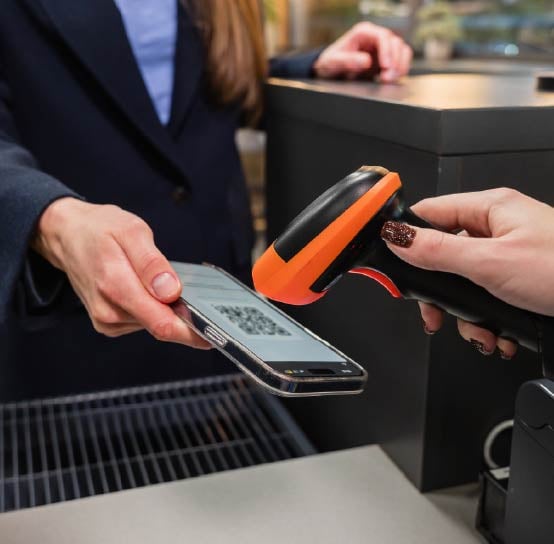 Thought leadership Co-lending in India: Expanding credit access for MSMEsIn today’s rapidly evolving financial landscape, co-lending has emerged as a key enabler of credit expansion in India, facilitating partnerships between banks and non-banking financial companies (NBFCs) to extend credit more efficiently to underserved segments.
Thought leadership Co-lending in India: Expanding credit access for MSMEsIn today’s rapidly evolving financial landscape, co-lending has emerged as a key enabler of credit expansion in India, facilitating partnerships between banks and non-banking financial companies (NBFCs) to extend credit more efficiently to underserved segments. -
 Article Why India’s financial inclusion journey needs to focus on equity and access to creditFinancial services have expanded over a decade, giving millions access to bank accounts and digital payments. But true empowerment needs to reach every corner of the country if growth is to be long-term and sustained
Article Why India’s financial inclusion journey needs to focus on equity and access to creditFinancial services have expanded over a decade, giving millions access to bank accounts and digital payments. But true empowerment needs to reach every corner of the country if growth is to be long-term and sustained -
 Thought Leadership Competitive and sustainable agriculture & food processing in KeralaThe economy of Kerala is primarily driven by the services sector, which contributes 66% to the Gross State Domestic Product (GSDP).
Thought Leadership Competitive and sustainable agriculture & food processing in KeralaThe economy of Kerala is primarily driven by the services sector, which contributes 66% to the Gross State Domestic Product (GSDP). -
 Article Economic Survey 2024-25: Deregulation, investment and innovation for a Viksit BharatIndia's economic growth remains for a steady trajectory with real GDP expected to grow at 6.4% in FY25 and in the range of 6.3%-6.8% in FY26, reflecting resilience despite global uncertainties.
Article Economic Survey 2024-25: Deregulation, investment and innovation for a Viksit BharatIndia's economic growth remains for a steady trajectory with real GDP expected to grow at 6.4% in FY25 and in the range of 6.3%-6.8% in FY26, reflecting resilience despite global uncertainties.
-
Quarterly Aviation Insights
Explore the latest trends in aviation industry with Grant Thornton Bharat’s Quarterly Aviation Insights. Stay updated on industry growth, market shifts & key developments.

-
Freight Forward: Quarterly insights
Logistics sector in India is adapting to rising costs, global disruptions, and the growing urgency of sustainability.
-
India-UK
India-UK
-
India - Japan
India - Japan
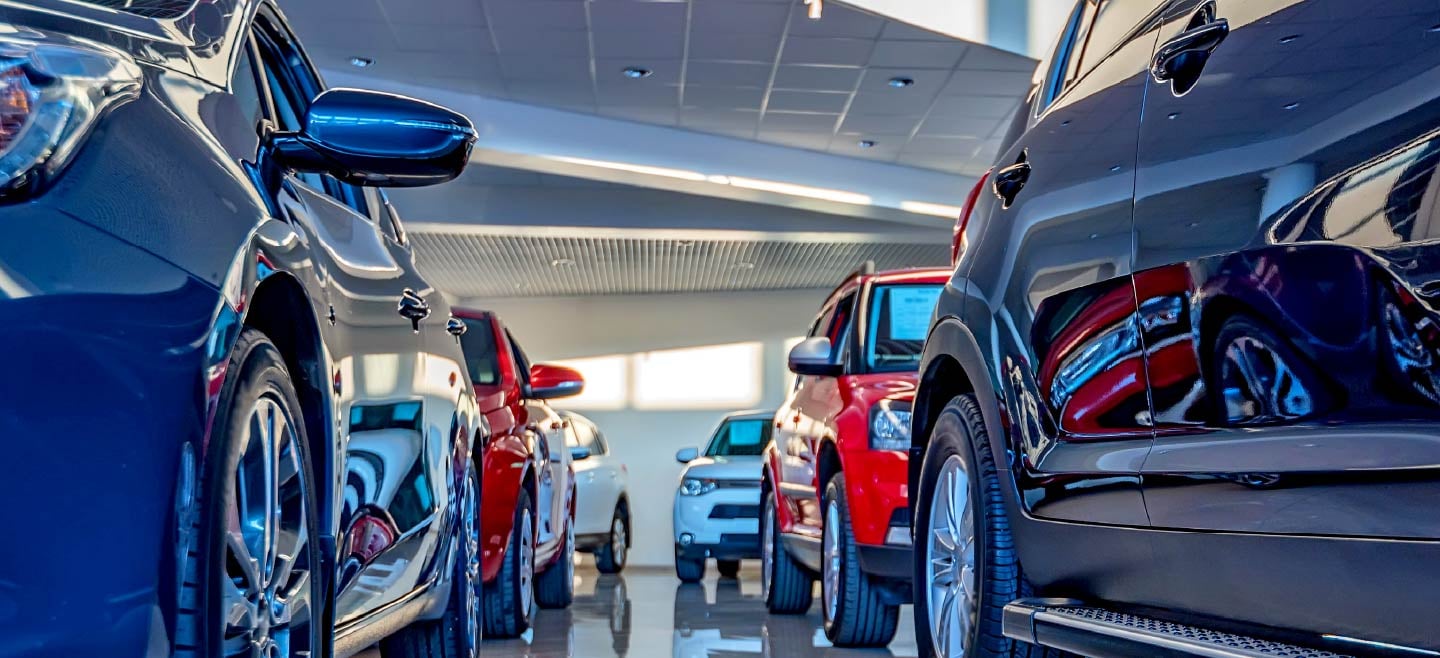
India’s automotive sector is witnessing a pivotal festive season, shaped by evolving consumer preferences, policy reforms, and digital transformation. A recent pan-India survey conducted by Grant Thornton Bharat, covering over 2,800 respondents across digital platforms and age groups, provides valuable insights into the factors influencing vehicle purchases this year.
The findings offer a strategic view into how affordability, safety, premiumisation, and technology are driving consumer decisions— and how these shifts are redefining the festive auto market.
The festive season has traditionally been a high-sales period, but this year it marks a deeper transformation. The rollout of GST 2.0 has significantly altered the affordability landscape. With tax rates on small cars reduced from 28% to 18%, and a simplified 40% slab for larger vehicles, acquisition costs have dropped across vehicle categories.
This has reignited interest in entry-level vehicles, particularly in Tier 2 and Tier 3 cities where price sensitivity remains high. The survey reveals that nearly 72% of respondents had deferred their purchase decisions in anticipation of these reforms.
Consumer preferences are also shifting in favour of hybrid vehicles, which emerged as the most preferred fuel category in the survey, ahead of petrol and EVs. 38% of respondents prefer hybrid vehicles, outpacing petrol (30%) and EVs (21%),signaling a clear consumer shift towards transitional, fuel-efficient technologies. While EVs continue to face infrastructure and range challenges, hybrids offer a practical alternative, especially in semi-urban and rural markets.
State-level incentives, such as road tax waivers in certain states, have further boosted hybrid adoption. OEMs are responding strategically, with over 15 hybrid models launched in the past year and around 8 models lined up for launch by March 2026.
Urban consumers are redefining value in vehicle purchases. The survey shows that over 65% of respondents are willing to pay a 10–15% premium for high-end variants, with a significant portion open to stretching their budgets even further. This appetite for premiumisation is driven by rising disposable incomes, stable interest rates translating into seamless vehicle financing, and a desire for enhanced features and aesthetics.
Vehicles are increasingly seen as lifestyle statements, and OEMs are responding with differentiated trims, luxury interiors, and connected car features that cater to this aspirational mindset.
Safety and technology have become central to the purchase decision. For the first time, safety has overtaken price and mileage as the top consideration for buyers, cited by 34% of survey respondents. Regulatory mandates like six airbags, ABS, and Bharat NCAP crash ratings have elevated consumer awareness. Simultaneously, tech integration—ranging from infotainment systems to smart interfaces—is now a baseline expectation.
Consumers are actively comparing models based on their digital capabilities, and OEMs are embedding advanced tech even in mid-range variants. This reflects a broader lifestyle shift, where digital fluency and smart living are influencing purchase behaviour across categories.
The way consumers discover and buy vehicles is also changing. Digital platforms have become central to the customer journey, with social media, car apps, and automotive websites playing a key role in model discovery and comparison. The survey highlights that 52% of respondents use both online and offline channels before making a purchase, indicating a blended buying journey. While digital research drives initial interest, physical dealership visits remain essential for validation through test drives and in-person interactions. This hybrid behaviour demands an omnichannel strategy from OEMs, ensuring seamless integration between digital engagement and physical execution.
Financing continues to be a critical enabler of demand. With stable interest rates and rising disposable incomes, consumers are more confident about upgrading their vehicles. A majority prefer a mix of loans and self-funding, supported by easy processing and flexible repayment options. The availability of green car loans and EV-specific financing products is further supporting the shift toward sustainable mobility. In rural markets, digital lending platforms are enhancing accessibility, making vehicle ownership more inclusive.
Interestingly, alternative ownership models like leasing and subscriptions are gaining traction. While traditional ownership still dominates, 37% of consumers surveyed are actively considering flexible options that offer relief from upfront costs and long- term commitments. These models are particularly attractive to urban professionals and fleet users and align with the broader trend of mobility-as-a-service. OEMs and financial service providers have an opportunity to educate consumers, simplify onboarding, and bundle value-added services to make these models more mainstream.
Strategic implications for OEMs and stakeholders
The festive season is no longer just a tactical sales opportunity—it is a strategic lens into the future of India’s mobility landscape. To stay competitive and relevant, OEMs must act on several fronts:
- Product strategy: The revival of small cars and the rise of hybrids demand a recalibration of product portfolios. OEMs should invest in fuel-efficient, tech-integrated models that cater to both aspirational urban buyers and price- sensitive rural consumers. Entry-level vehicles must be reimagined with better safety and tech features to remain relevant. The survey’s indication of renewed interest in small cars post-GST reform reinforces the need for inclusive product planning.
- Digital engagement: With digital platforms driving discovery, OEMs must build robust content strategies across social media, automotive apps, and websites. Influencer marketing, virtual test drives, and interactive configurators can enhance visibility and trust. SEO optimisation and platform-specific campaigns will be key to capturing consumer attention. The survey’s finding that 35% of consumers discover new models via social media underscores the importance of digital-first strategies.
- Customer experience: The blended buying journey calls for seamless omnichannel experiences. OEMs and dealerships must ensure consistency across online and offline touchpoints—from digital research to in-person test drives. Transparent pricing, responsive service, and integrated CRM systems can help build lasting relationships. With 88% of respondents preferring to compare offers across dealerships, competitive differentiation at the point of sale is more critical than ever.
- Financing innovation: As affordability remains central, OEMs should collaborate with banks and fintechs to offer tailored financing solutions. Green loans, flexible tenures, and bundled packages (including insurance and maintenance) can enhance value perception and drive conversion. The survey’s insights into financing preferences highlight the need for accessible and customisable credit products.
- Ownership models: Subscription and leasing platforms must be scaled to meet the needs of digitally savvy, urban consumers. Offering customisable plans, easy upgrades, and bundled services will make these models more attractive. Educating consumers and simplifying digital onboarding will be critical to adoption. With 37% of respondents open to alternative ownership, this is a space ripe for innovation.
- Safety & tech integration: Safety and technology are no longer optional—they are expected. OEMs must embed advanced safety features and connected tech across all variants. Investing in software systems, over-the-air updates, and user experience design will differentiate brands in a competitive market. The survey’s emphasis on safety and tech as top purchase drivers makes this a strategic priority.
As festive demand reshapes India’s auto sector, it is no longer just a seasonal upswing—it is a reflection of deeper structural shifts in consumer behaviour and market dynamics. For OEMs and stakeholders, this moment presents a strategic opportunity to realign offerings, innovate across channels, and build for sustained growth in a rapidly evolving mobility landscape.
This article first appeared in the Autocar Professional on 19 October 2025.

